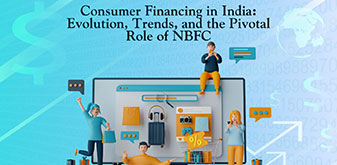Credit Unions' Approach to Digital Transformation
Updated On : September 2019
Digital disruption is taking over and swiftly transforming the financial services industry. To thrive, Credit Unions need to provide superior experiences to all stakeholders and deliver on increasing expectations in a faster, more agile way. The opportunities are huge and credit unions have to be bold enough to embrace digital transformation and to survive and grow exponentially in the long-term.
Credit unions in the US & most other countries are "not for profit" businesses and exist solely to serve their members. As the needs and preferences of members evolve, credit unions too must adapt their offerings to remain competitive, relevant and meet these evolving expectations. They need to embrace digital transformation in a way that would benefit their members.
There are 5 areas in which credit unions can bring in digital transformation.
-
Member Engagement
Credit union members expect similar experiences with their credit union like that with big banks, insurers, retailers, service providers, and online financial platforms. So credit unions are offering diverse Omnichannel engagements and constantly evaluating the customer journey to understand how to engage members through each channel. They are finding ways to enhance customer engagement with convenience and value, all while taking into account opportunities that new technologies provide.
Some modern credit unions provide online chatbots to help answer member inquiries about their accounts or transactions. Yet some others provide personal video calls to a customer support representative and other instant ways of engagement through their mobile devices. Technology allows us to measure impact and engagement and based on the data credit unions can fine-tune further digital transformation investments.
-
Workplace
A credit union's strength is its employees and this workforce's efficiency and effectiveness, which corresponds directly to organizational costs, and ultimately to the value that credit unions provide their members. Technology is changing the way people work and from where they work. Credit unions must enable people to work from wherever they are and allow for a secure, seamless transition between each modality of work through the use of a digital workplace platform.
Having adaptive workspaces leads too much greater productivity and greater health and wellbeing for employees. Perhaps the greatest way to motivate teams to achieve their maximum potential is to create a sense of autonomy. Strong, empowered, self-managing teams are important to credit unions that are providing the most value to its members. To support workplace autonomy for individuals and teams, modern digital tools are being leveraged to promote this style of collaboration and engagement.
-
Operations
There is a complete range of digitization available to credit unions like completely redesigned digitally-enabled business processes and digital aids that can help automate existing processes. Within minutes, credit unions can create manager approval requests for vacation leave, send customized automated responses to new members once entered into the CRM, or automatically start a support case after a member tweet.
Digitizing operations enable making changes either rapidly or incrementally and using captured data for future investment. It makes measurement and tracking natural. Modern credit unions have a 360-degree view of their operations and processes which allows them to view and use operational dashboards with real-time insight into operations.
-
Products
Credits unions are easily competing with financial institutions that are adopting products enhanced with digital tools. Like most financial institutions, credit unions too can leverage mobile technology to offer their products conveniently and provide value to customers. These financial institutions leverage mobile apps allowing customers to carry out activities like depositing checks, transferring money, viewing banking transactions, setting up budgets and alerts, or even paying for merchandise through their smartphone or smartwatch.
Digitization of products also lets credit unions easily experiment with and measure the impact of new products and services, which allows them to transform safely, effectively, and continually the value they give their members.
-
Compliance
Digital transformation can make compliance easier for credit unions. Credit unions with antiquated or poorly maintained systems face security risks. Moving to cloud-based platforms, which are always up to date, is the best option.
With any kind of business transformation, compliance requirements are usually the most critical and is a global constraint credit unions deal with. Compliance is addressed everywhere that members and employees interact with the credit union. Credit unions reduce risk by engaging with platform specialists like Nelito who help to extend technology platforms to both employees and members while remaining compliant.
Finally, for a credit union, digital transformation could involve significant time and resources, but it is the key to gain a lead in the industry. Equipped with it, a credit union can expand its products and services to engage with online and mobile users, who expect the same sophistication and level of service that they expect from other businesses.
Leave Comments :
Latest Blog
-
 The Top 10 Co-operative banks in India 2025 Updated
On : March 2025
The Top 10 Co-operative banks in India 2025 Updated
On : March 2025
-
 The Top 10 Microfinance Companies in India 2025 Updated
On : January 2025
The Top 10 Microfinance Companies in India 2025 Updated
On : January 2025
-
 Consumer Financing in India: Evolution, Trends, and the Pivotal Role of NBFCs Updated
On : February 2025
Consumer Financing in India: Evolution, Trends, and the Pivotal Role of NBFCs Updated
On : February 2025
-
 Bridging India’s Credit Gap: The Role of UPI and Digital Innovation Updated
On : February 2025
Bridging India’s Credit Gap: The Role of UPI and Digital Innovation Updated
On : February 2025



Comments :